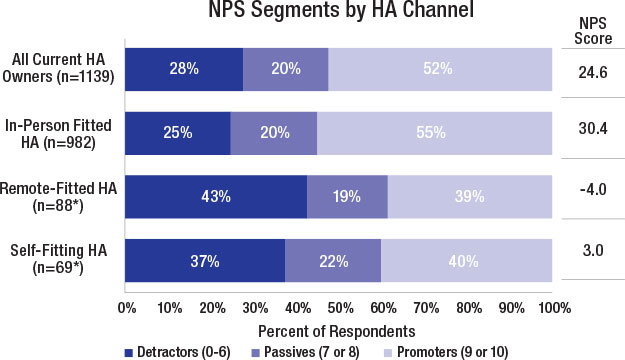
Treating Subclinical Hearing Loss is a Business Opportunity
Brian Taylor, Au.D.
MarkeTrak (MT) 2022, the latest version of the recurring survey of hundreds of hearing aid owners, provides several data-driven insights that audiologists can apply to patient care. Among the numerous actionable findings are these: 1.) Hearing aids improve the quality of life (QofL) and the likelihood that someone will report these QofL improvements is directly related to the type of technology found in their hearing devices. Specifically, wearers with these three newer advanced features: rechargeable batteries, downloadable apps, and wireless streamers (for the television or a companion microphone) tend to report higher levels of satisfaction. 2.) Hearing aid wearers, regardless of how they acquired their devices, (in-person, remote or self-fit) all report high levels of satisfaction. Individuals who acquired their devices in-person, however, are significantly more loyal than those who purchased their devices through another channel (remote or self-fit). Consequently, individuals who experienced in-person care are more likely to actively spread positive word of mouth about the support they received from the audiologist.
Used by businesses around the world for more than 20 years, the Net Promoter Score (NPS) is a popular metric of customer loyalty. The basic idea of the NPS is that loyal customers not only buy again from the same business, but through their positive word of mouth they actively promote the business to others. The NPS measures the response to the question, “how likely are you to recommend the products and services of this business.” Using a 1-10 scale, the NPS is the difference between those customers who report that they will “highly recommend this business,” which is 8-10 on a comment card, compared to other customers who report that they are “indifferent” or “unlikely to recommend this business,” a 1 to 7 on the comment card. The difference between these two groups is the NPS.

As the Figure above shows, in-person care yields a NPS of 30.4, while both remote fitted hearing aids result in a score of -4.0 and self-fitted hearing aids generate a NPS of 3.0. Granted, the total number of remote fitted and self-fitted hearing aids is paltry compared to the large number of those fitted in-person. Perhaps as more people buy OTC, these numbers will change. At least for now, audiologists who lean into best practice care, delivered in-person, are more likely to create an abundance of patients who actively promote their practice to others. These MarkeTrak 2022 results indicate that — even in the face of OTC and remote care — most patients want just a little of that human touch. ■
